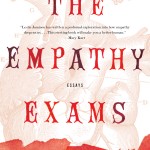Marilynne Robinson’s three novels are gentle, compassionate, wonderful in the strict sense, and haunting. However, none of these adjectives describe Mother Country, her 1989 tirade against nuclear pollution and English civilization. You can imagine her writing the novels – Housekeeping, Gilead, and Home – from a desk by the bright east window in a quiet house. But Robinson herself provides the image for Mother Country: “the unsettling emergence of lady novelist as petroleuse.” (What a chanteuse is to singing, a petroleuse is to arson.) The pages are doused with sarcasm and lit with scorn. On a first read, it’s like one of the YouTube videos where a respected actor gets caught on tape freaking out over some trifle. But Robinson didn’t write this in a frenzy: the book took shape over at least half a decade. What was she up to?
There is much I did not know about British nuclear policy until I read this book. Britain, being a small, crowded island, relies more heavily on nuclear power than the United States does. But beyond simply generating power, Britain has a semi-commercial industry that imports nuclear waste from other countries and reprocesses it into other kinds of nuclear fuel and less dangerous forms of waste. The primary reprocessing plant, Sellafield, is in Cumbria, northwestern England. Sellafield has been called so ever since the “Windscale Fire” disaster made the site’s original name, “Windscale,” unsuitable for publicity. High-profile accidental irradiations and subsequent government cover-ups might be one thing, but for several decades the Sellafield facilities piped nuclear waste directly into the Irish Sea as a matter of day-to-day policy. When Robinson lived in England in the mid-80s, she followed the public outcry over Sellafield in the British press, and her clipped-out newspaper articles became the basis for Mother Country.
For Robinson, Sellafield is an instance in the history of England’s toxic culture, of one piece with Tudor anti-Vagrancy law, Elizabethan mobility restrictions, Victorian workhouses, and the posh authoritarianism of Fabian socialists in the Edwardian era. And so she takes the reader on a highly entertaining tour of English social thought, from Daniel Defoe to George Bernard Shaw, tracing out elaborate justifications for a society in which the State extracts labor from the poor through any means at its disposal. But to the surprise of those of us who have been taught to think of capitalism and communism as derived from two distinct sources, Robinson’s two great dissenting voices are Adam Smith and Karl Marx, with eighteenth-century America as an example of their ideals:
There is [an economic system] described by both Smith and Marx, and, as luck would have it, indigenous to America, of a society based upon individual autonomy, to be achieved through policies of government that by act or omission enhance the specific, tangible, material well-being of individual people, by creating conditions of life that enhance vigor and morale. These include education, fair wages, wholesome food and water, and reasonable hope for one’s children.
The Land Grant Act, the Homestead Act and the GI Bill are examples of such government policies. Mother Country doesn’t give a name to this kind of system, but you could do worse than calling it American Distributism.
Of course, this reminds us that there was an English Distributism, and brings to mind a number of Englishmen left unmentioned. Turning to Mother Country‘s social bibliography was a little bit one of those situations where Nabokov leaves an important clue to the plot of the book hidden in the index. The two most famous distributists, Chesterton and Belloc, are there, along with R. H. Tawney, and so are several major works of contemporary scholarship. There is serious engagement with important primary and secondary sources behind Robinson’s moral exhortation. She’s clearly not ignorant of countercurrents to English socialism, but a survey of the relevant scholarship is a task for a different kind of book. The point is, rather, to develop a public, jargon-free language for economics and morality.
But the subject was nuclear pollution, wasn’t it? And the United States has its own history of nuclear pollution. The Hanford facility was built in the 1940s, on the Columbia River in the state of Washington, many miles upriver from Portland, Oregon. Plutonium production there rose and fell in response to perceived defense needs until the late 1980s. After that, Hanford became part of the Superfund, which is the Federal program that provides funds for cleaning up abandoned hazardous waste sites. (Consider, for a moment, the public relations feat of getting people to call something a “Superfund Site” instead of a “toxic wasteland.”) The US Goverment has spent over $40 billion to clean the Hanford site. And within twenty miles of Cincinnati, Ohio, the Fernald Production Center put radon gas and hundreds of tons of uranium into the environment. After the Fernald facility’s closure, the government spent over $4 billion on cleanup, again through the Superfund. And of course there’s Three Mile Island, the nuclear power plant in Pennsylvania that partially melted down in 1979.
Robinson argues that a great part of Sellafield’s significance comes from its status as a profitable state-sponsored industry that imports waste from other nations. The United States’ military ventures and power plants would be seen differently, because they at least have a plausible connection to the well-being of the people. Or so the argument goes. I find it tenuous, and I find Robinson much less trustworthy in general on nuclear matters than on political economy.
She builds on frightening facts which deserve to be more widely known, but includes a series of conspiratorial speculations that ultimately undermine her point. She repeatedly suggests that the image of funding-strapped bureaucrats is a kind of deception: “a cynic might wonder again if this image of a cautious and stalemated government has been planted to create characterizing detail at odds with the plain, brute persistence of actual policy.” Elsewhere, she tosses off a line about the possibility of plutonium waste somehow gathering underground and going critical, which is exactly the kind of claim I would like to make sure is backed up by expertise.
Robinson’s readings of British newspaper articles are bizarrely hostile. Because the newspapers presented a confusing story about Greenpeace activists who discovered a radioactive “slick” in the sea near Sellafield, Robinson comes close enough to accusing Greenpeace of lying that Mother Country was banned in England for libel. It doesn’t seem to occur to Robinson that the fault could lie in journalists rather than the activists. I spent a day in the library looking up her source articles and wondering how she managed to find them so sinister. Robinson spends ten pages paraphrasing and applying heavy snark to a New Scientist article by Michael Kenward, which she faults for “presenting very bad news obliquely.” To me, the article reads as a puff piece about a functionary, and is straightforward, though not outraged, about what Kenward calls “the radiation that seeps out of Sellafield.”
It’s too bad that so many details of Mother Country’s scientific argument are not credible, because our society needs a public and jargon-free language for industrial science and environmentalism just as much as it needs one for morality. I admire the project’s goals but not its execution. The first half of the book deserved a better second half, one that made an effort to situate Sellafield not just in British history but in the whole sad sweep of industrial degradations of the created world.













